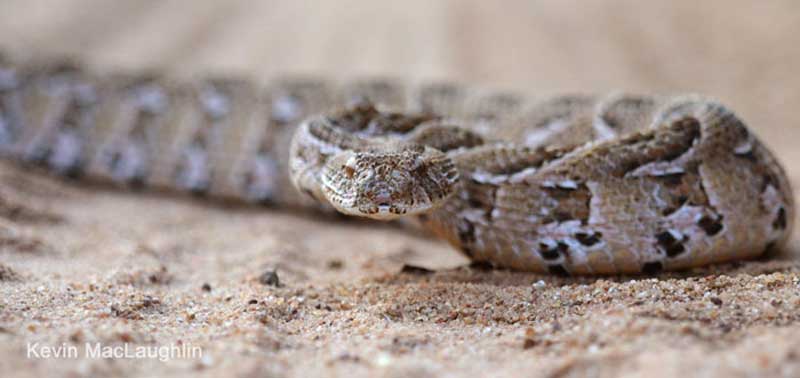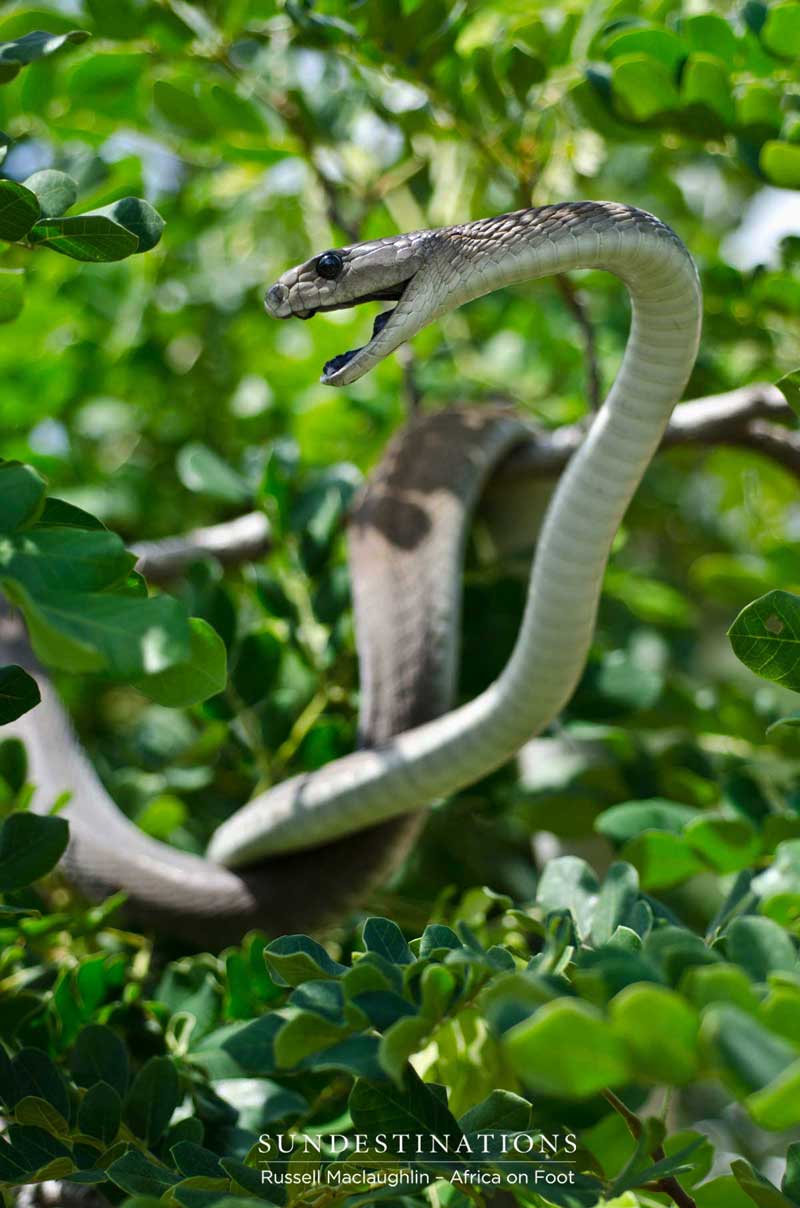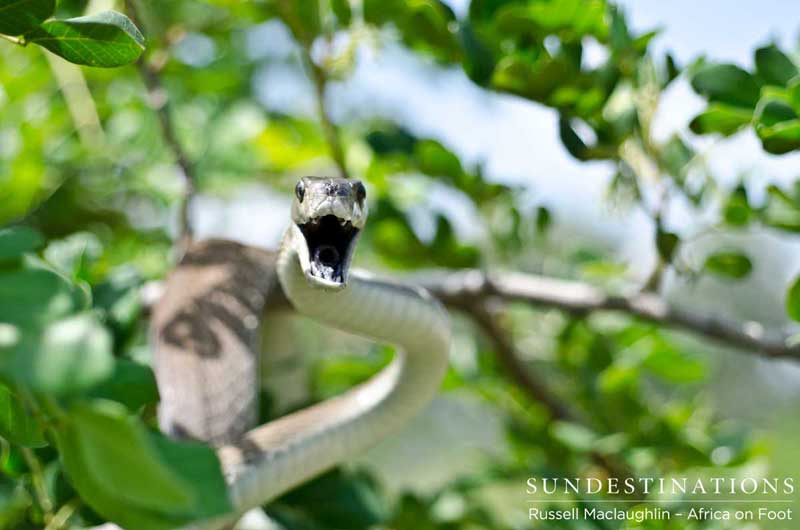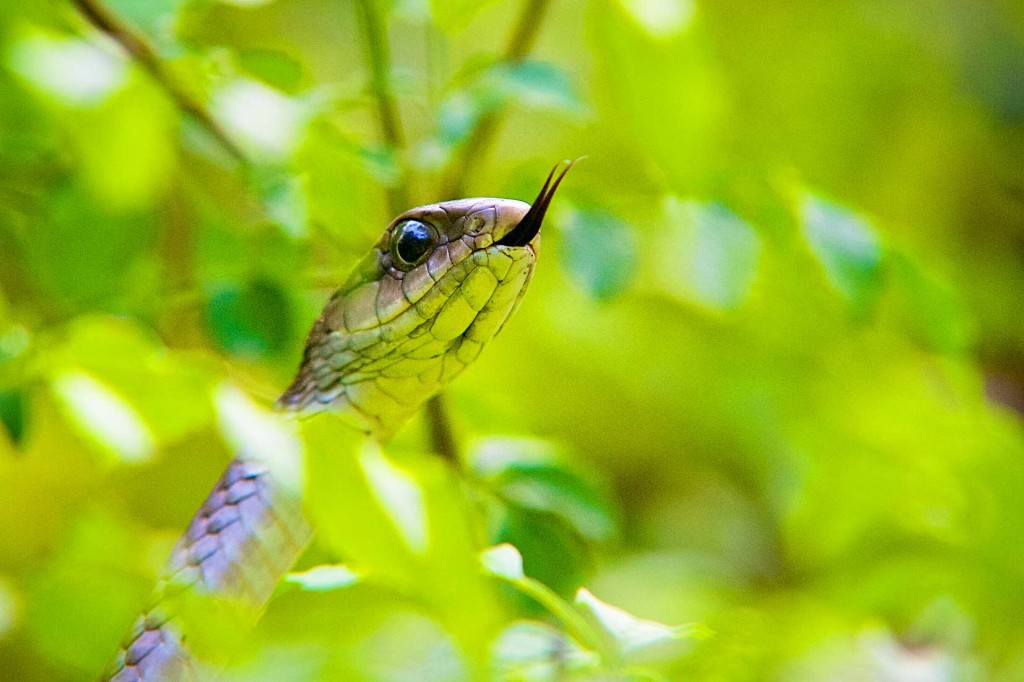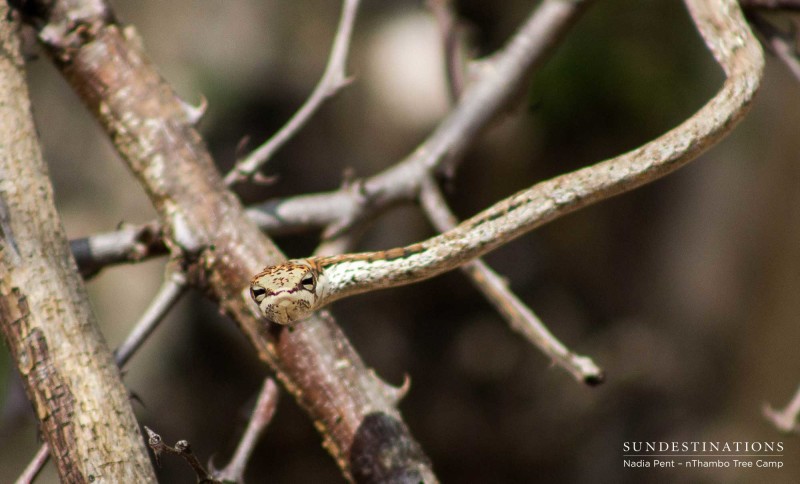Silently they sliver through the bushveld, disappearing without a trace and reappearing when you least expect it – this is the underground world of the serpent. Snakes are probably the misunderstood species within the safari world and irrationally feared by many. They don’t seek to destroy and when they feel vibrations from movement, they rapidly retreat.
The majority of bites happen with snake handlers and those that have accidentally stood on one these graceful and slender creatures. Of course, we don’t advocate the handling of any snake – there are too many similar markings on venomous and non-venomous snakes.
Throughout southern Africa we have a variety of snakes, from harmless to those possessing a deadly cocktail of venom. Venomous snakes are found in abundance and hopefully you’ll spot a few while out on safari. We all have a favourite animal and believe it or not, there are a number of budding herpetologists out there simply dying to spot an elusive black mamba.
There are three types of venomous snakes in southern Africa – they fit into the cytotoxic, neurotoxic and haemotoxic category. Our most venomous snakes include the aggressive black mamba, the puff adder, Mozambique spitting cobra, Cape cobra, boomslang, vine snake and gaboon viper.
Cytotoxic
Cytotoxic venom is a cell destroying venom and affects the soft tissues within the body. The pain after a bite is immediate and located at the site of the bite. The pain becomes increasingly painful and many recorded deaths are from shock due to pain. There is generally localised necrosis 48 hours following the bite. The blistering appears first and then the darkening of the area around the fang puncture wounds. Venom spitting cobras causes inflammation of the eyes (snakes will aim for the eyes) and there is generally a milky discharge from the eyes.
Cytotoxic venom acts immediately and basically “rots” the flesh and even the bone beneath. The venom spreads through the body and attacks the cells within organs. If you are bitten by a cytotoxic snake the pain is intense and immediate – it can eventually lead to kidney failure and many deaths also occur from a severe allergic reaction.
Snakes in this category : puff adders, gaboon vipers and Mozambique spitting cobras.
Neurotoxic
Neurotoxic venom attacks and disrupts the neural pathways and nerve tissue in the body. Neurotoxic venom is excessively fast acting and first off causes drowsiness, then blurred vision and eventually paralysis if medical treatment is not received. Lungs eventually stop working and death can happen via respiratory failure. The short front fanged snakes are the ones that inject neurotoxic venom.
Snakes in this category : cobras and black mambas.
Haemotoxic
Heamotoxic venom stops blood from clotting, blood vessels are destroyed and eventually causes internal bleeding. The bite site will start bleeding and the victim will start to bleed from small cuts and mucus membranes. Symptoms include headaches and nausea.
Snakes in this category : boomslang (a back-fanged snake) and the vine snake.


